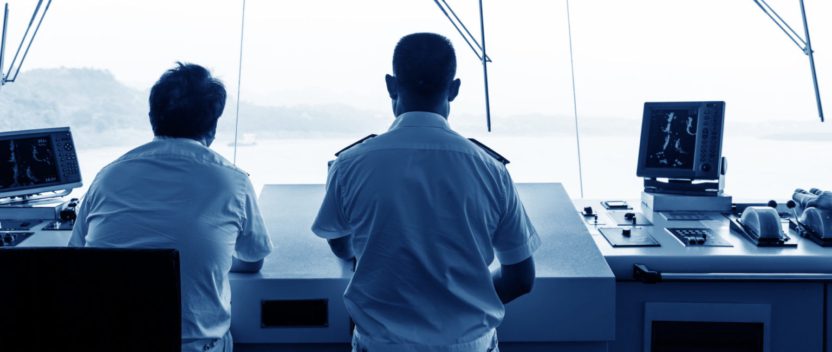Only human? An interview with Jens Rolfsen of Norwegian risk management consultancy Safetec
Compared to other transport modes, the shipping industry is a comparative latecomer to the concept of integrated risk analysis and mitigation. While some sectors, notably the offshore market, tankers and cruise ships have embraced risk management, for others regulatory compliance is often considered enough.
Arguably, this might not matter, so long as shipping maintains its safety record. In fact, while high profile pollution incidents are scarcer than ever, accidents continue to happen, costing lives and money and raising questions about how prepared the industry is to truly manage risk. It’s a paradox that the industry is beginning to recognise, especially as the disciplines of shipping and offshore continue to overlap. Higher technology vessels place greater demands on crew competence and day-to-day operations, while harsher operating environments and commercial pressures conspire to ask deeper questions about how technology and the human factor interact.
For Jens Rolfsen, Specialist Adviser and Department Manager for Leadership, Organisation and Safety for Norwegian risk management consultancy Safetec, part of the ABS Group, the industry needs to accept that the questions, as well as the answers, need to change.
“The shipping industry should no longer talk of 75% of accidents being caused by human factors and at the same time ignore such factors in its risk analysis and mitigation measures,” he says. “Parts of the industry continue to cling to the idea that it is enough to conclude that people are the problem and try to mitigate this with a quick fix of more paperwork or more regulation.”
In terms of future risk management, he says, there is a growing awareness that risk analysis and mitigation has to be able to integrate both technological, individual and organizational factors. This calls for a holistic, multidisciplinary approach. It also calls for the industry to acknowledge that the response to ‘human factor’ incidents requires sustainable, organisation-level solutions rather than quick-fixes on an individual level.
“Since humans design, build, operate and maintain machines, all accidents can be said to have been caused to some extent by human factors and the traditional response is to zoom in on the individuals involved,” he continues. “This can take the form of punitive measures by governments, increased training aimed at avoiding a repetition, or by adding yet another procedure to the already extensive library of procedures and checklists onboard.”
Measures related to training and procedures share an underlying but flawed assumption that the issue can be easily resolved on the individual level. At best, such an approach results only in measures to improve training or individual competency, instead of an examination of the interface between man and machine or man and organisation where the majority of things go wrong.
Instead of focussing almost exclusively on the individuals involved in an incident, regulators, flags and the loss prevention community should be ‘zooming out’ to the bigger picture. How are humans, technology and organisations interacting and can we use this analysis to understand why things go wrong and how we can prevent repetition?
One of the best-known examples for potential improvements on this macro level is navigation bridge design. There is a large amount of research and analysis available on this subject, certainly enough to design a bridge to a high standard of ergonomics and usability.
“Still shipping does not always take this learning and put it into action. It is possible for companies building a series of ships to end up with multiple bridge layouts because they allow the design to be based on an individual masters’ preference,” says Rolfsen. “One could hardly imagine the same thing happening in the airline industry. In fact the opposite is often true, with the airlines regularly working ahead of regulation, innovating at a corporate level, with new practices adopted later as regulation on the basis of their proven effectiveness.”
In an ideal world, there should be one process to design a bridge for humans to use, taking into account the size and type of ship. The true requirement is to design training programmes and procedures that make it possible for any properly trained crew to operate the ship as part of a team, augmented where necessary with vessel-specific training.
Bridge and engine room procedures are another key area where there is usually room for improvement. The Safetec approach starts with examination and evaluation; are the procedures actually used for mitigation risk or for some other function? Are the procedures short, relevant, specific and even possible to use while operating the vessel? Can the crew actually fulfil the requirements?
In addition to bridge team management, trust in the relationship between ship and shore is another critical factor. There seems little sense in giving a master responsibility for an asset and cargo worth billions of dollars while denying costs of a few thousands that his judgement tells him he needs.
“For this trust to exist it is necessary to look at risk management in a holistic manner. This means not just within the ship owning or operating company but the ship’s management, the ship itself and the cargo owner and how risk management and safety culture can be instilled across the entire operation.”
With agreement across the chain, from shore to cargo owner it is possible to simplify procedures to the point where crew can be relieved of unnecessary duties and allowed to focus on core safety tasks.
“Rather than adding more paperwork for example, some ship owners are finding ways of taking it away,” suggests Rolfsen. “Smart owning and management companies have found it possible to re-write procedures dramatically while remaining within the regulations.”
Changes are already happening. The International Maritime Organization’s Manila Amendments to the STCW Convention, as well as its general move towards risk-based regulations, are a demonstration that concepts of leadership and teamwork are being encouraged, but the industry must also enable seafarers to do their jobs with confidence.
Making better use of what you already have rather than adding more on top does more than increase safety, Rolfsen suggests. There is plenty of evidence that it can also improve efficiency.
“The idea that a ship owner could actually save money by focussing on safety seems contradictory but by building safety culture from the bottom up it is possible to have a leaner structure that can also be more cost efficient.”
Large tanker owners have been able to implement such programmes and achieve tangible results. Owners have seen a steady reduction in their insurance premiums following the introduction of advanced safety management and training regimes. Publically-quoted companies which are identified as having a strong safety management culture have been able to return consistent share price value even in tough markets.
In the cruise sector, owners are adopting new approaches to safety management in response to recent casualties. Their public profile means it potentially harms their business if they are not seen to make changes – and they cannot necessarily wait for regulators to enact new rules, he points out.
At present, an integrated approach to risk management – which supports a macro view of safety in day to day operations – is found on a company-to-company basis rather than across the industry. Regulatory drivers can help so much in pushing adoption forward. The first realisation is that change is not just necessary but welcome.
“The process is often most effective when an owner decides for themselves to make a positive change. Rejecting the traditional approach of focussing on human factors in isolation while failing to grasp the importance of interaction between humans, machines and organisations is the necessary first step,” says Rolfsen.
Looked at it from this perspective, adopting an integrated approach to risk management has the potential to be a meaningful driver for ship owners and operators even when earnings are under pressure. If the potential benefits, not just in terms of safety but in lower operating costs and improvement of business reputation, can be realised, then Rolfsen says “the investment decision in safety could not be easier to make”.
Ends


